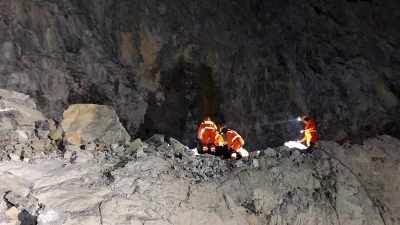Climate changing 10 times faster than in past 65 million years
If the trend continues at its current pace,it will place significant stress on terrestrial ecosystems.
The likely rate of climate change over the next century will be 10 times faster than in the past 65 million years,the largest since dinosaurs went extinct,a new study has warned.
Researchers said if the trend continues at its current rapid pace,it will place significant stress on terrestrial ecosystems,and many species will need to make behavioural,evolutionary or geographic adaptations to survive.
Although some of the changes the planet will experience in the next few decades are already “baked into the system,” how different the climate looks at the end of the 21st century will depend largely on how humans respond.
Researchers Noah Diffenbaugh and Chris Field,both senior fellows at the Stanford Woods Institute for the Environment,conducted targeted but broad review of scientific literature on aspects of climate change that can affect ecosystems,and investigated how recent observations and projections for the next century compare to past events in Earth’s history.
For instance,the planet experienced a 5 degree Celsius hike in temperature 20,000 years ago,as Earth emerged from the last ice age. This is a change comparable to the high-end of the projections for warming over the 20th and 21st centuries,researchers said.
The geologic record shows that,20,000 years ago,as the ice sheet that covered much of North America receded northward,plants and animals recolonised areas that had been under ice. As the climate continued to warm,those plants and animals moved northward,to cooler climes.
“We know from past changes that ecosystems have responded to a few degrees of global temperature change over thousands of years,” said Diffenbaugh.
“But the unprecedented trajectory that we’re on now is forcing that change to occur over decades. That’s orders of magnitude faster,and we’re already seeing that some species are challenged by that rate of change,” he said.
Extreme weather events,such as heat waves and heavy rainfall,are expected to become more severe and more frequent,researchers said.
They note with continued emissions of greenhouse gases at the high end of the scenarios,annual temperatures over North America,Europe and East Asia will increase 2-4 degrees C by 2046-2065.
With that amount of warming,the hottest summer of the last 20 years is expected to occur every other year,or even more frequently,researchers said.
By the end of the century,should the current emissions of greenhouse gases remain unchecked,temperatures over the northern hemisphere will tip 5-6 degrees Celsius warmer than today’s averages. In this case,the hottest summer of the last 20 years becomes the new annual norm,they said.
The scientists also projected the velocity of climate change,defined as the distance per year that species of plants and animals would need to migrate to live in annual temperatures similar to current conditions.





- 01
- 02
- 03
- 04
- 05

























